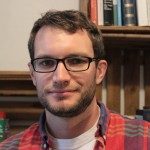Link to Pubmed [PMID] – 26926518
Link to DOI – 10.1186/s12864-016-2501-0
BMC Genomics 2016 Feb; 17(): 158
Sponges (Porifera) harbor distinct microbial consortia within their mesohyl interior. We herein analysed the hologenomes of Stylissa carteri and Xestospongia testudinaria, which notably differ in their microbiome content.Our analysis revealed that S. carteri has an expanded repertoire of immunological domains, specifically Scavenger Receptor Cysteine-Rich (SRCR)-like domains, compared to X. testudinaria. On the microbial side, metatranscriptome analyses revealed an overrepresentation of potential symbiosis-related domains in X. testudinaria.Our findings provide genomic insights into the molecular mechanisms underlying host-symbiont coevolution and may serve as a roadmap for future hologenome analyses.


